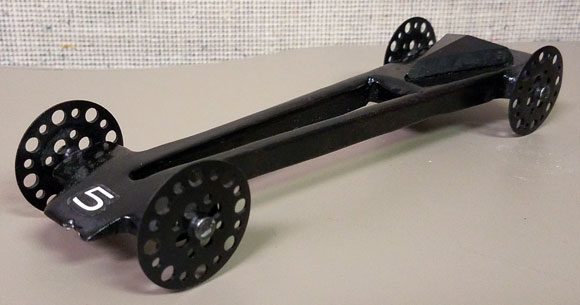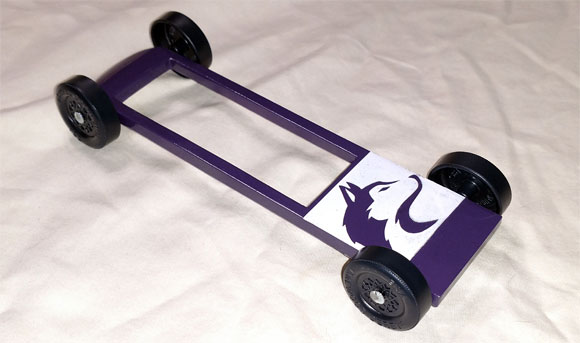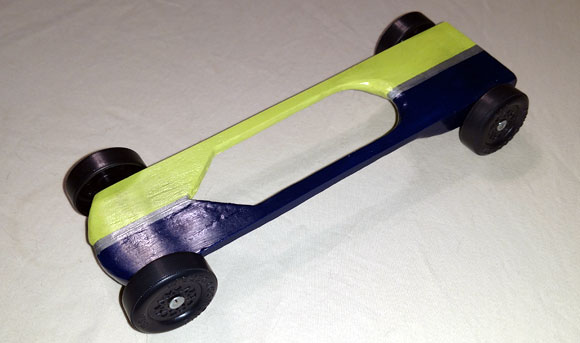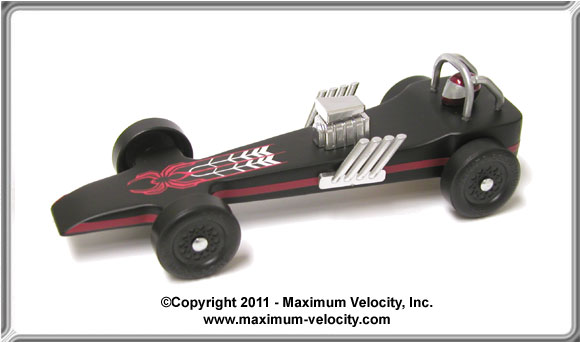PINEWOOD DERBY TIMES
Volume 17, Issue 1
October 4, 2017
In this Edition
– Editor’s Notes
– Feature Article – Understand Your Local Race Rules Before Building
– Humor
– Product Showcase – Truck Kit: $2.00 Off
– Pinewood Derby Car Showcase
– Pinewood Derby Memory – Solid as a Rock
– Q&A
Editor’s Notes
Welcome to the New Pinewood Derby Season
Well, somehow it is fall again and pineheads everywhere are preparing for the new racing season. We hope that you had a great summer and that you will be visiting us again soon for all your pinewood derby needs.
Here at Maximum Velocity, we have a full agenda of articles and photos to educate, entertain, and (hopefully) inspire you. But we are always looking for your input. So, please send us your photos, speed tips, articles, memories, etc.
New Products for the 2017-18 Season
A few weeks ago we introduced several new products to help you have a
winning race season. These products include:
New Car Kits: We are introducing three new car kits: the Dominator, the Funny Car, and the Truck. The Dominator is an aggressive, bone-shaped car that sports a 3.5 ounce tungsten canopy. Using rail-riding alignment, this extended wheelbase car will offer top performance. Our Funny Car and Truck kits are more traditional, to allow you top performance and style. The Funny Car is also available bundled with speed wheels, speed axles, and Max-V-Lube.
Weight: In addition to our 1 inch diameter rounds, we now offer a 1-1/4 inch diameter tungsten round which is thinner than our other rounds to allow for lower-profile cars.

Additionally, we have added five new dry-transfer decals from PineCar,
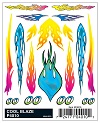
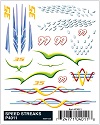



We are clearing inventory on several items including:
– Tundra and tungsten weights
– Velocinator and Formula One car kits
– Paint Stencils
We don’t have many left, so don’t delay. You can find these items Here.
If we can help you in any way with your pinewood derby project, or if you have any feedback regarding this newsletter, please Contact Us.
Feature Article
Understand Your Local Race Rules Before Building Your Car
By Randy Davis
You have that Pinewood Derby kit in hand and you’re ready to build a car. Will it be a race car, a rocket, or maybe something a little crazier? You can let your imagination run wild – well almost. As in all of life there are written and unwritten rules that we must follow. So, put down the pencil or tool, set the wood block aside, and read the rules for your race.
If you were not provided with a set of rules, contact the race or club leader to find out what rules are being used. Sometimes only the rules that came from the kit manufacturer are used. Other times, rules are posted on the Internet, but are not included with the kit. But whatever the case might be, find the rules and read them.
Listed below are topics that you need to know before designing and building your car. Much of the information should be written in your rules. The rest you can learn from the race leader.
Car Dimensions – Each race has rules for the maximum length, height, and width of your car. There should also be a rule for the minimum distance between the inside edges of the wheels. It is easy to take these measurements into account when you are designing and building the car, but very difficult to adjust them at the weigh-in. As an example, this problem was experienced firsthand by a young car owner in our local race a few years ago. In our race, 3 inches is the maximum height (so that the car will fit under the finish line). A young lady brought in a car that was carved to look like a duck, complete with a long curving neck. The car looked great! But unfortunately, it measured nearly 5 inches tall. What could we do? Amidst a few tears, the young lady gave us permission to “operate” on the duck. So, we shortened the neck enough so that the car measured 3 inches tall. All in all, the situation ended well, but a simple check of the rules would have avoided this tearful situation.
Underbody Clearance – You may want to attach weight under your car, but make sure that with weight attached the clearance specification is still met. It is relatively easy to recess weight into the bottom of the car as part of the building process, but much more difficult to do so at the weigh-in. Recently a car owner brought their car to the weigh-in with weight screwed to the bottom of their car. Unfortunately, the clearance specification was not met. The only option the car owner had at the weigh-in was to remove the weight and screw some of it on top of the car. Not only was the car underweight, but the car no longer looked as nice.
Maximum Allowable Weight – Before cutting out your car have a plan to meet the maximum weight. Holes and/or pockets can be readily machined into the original wood block, but not easily machined into a shaped car body. So, first make pockets or holes to accommodate the weight. Next, make sure you can easily add or remove weight from your car. It is very difficult to make large adjustments to the weight of your car after it is complete. I can think of many cases where cars were very much underweight or overweight at the weigh-in. As an example, I remember one car shaped to look like a bus that was made from a fir board instead of the supplied pine block. Not only did this violate the rules, but since fir is much heavier than pine, the car was nearly double the maximum allowable weight! On the opposite extreme, many times cars have been brought to the weigh-in with no added weight. Frantic attempts were then made to add weight, with the result being a damaged car.
Adding/Removing Weight – Find out if you will be able to add, or only remove weight at the weigh-in. If you are only allowed to remove weight, make sure your car is slightly overweight when you take it to the weigh-in.
Wheel Rules – Generally, you must use the wheels that come with your car kit, and most commonly the only wheel modification allowed is a light sanding. However, some races do allow more extensive wheel modifications, and if done well those modifications can improve speed. But know the rules, and don’t modify the wheels unless the rules specifically allow wheel modifications.
Wheel Base Measurement – Generally, the wheel base (distance between the axle slots) on the supplied block must be used. But in some races the wheel base may be extended, providing a speed and alignment advantage. If specifically allowed by your local rules, then by all means extend the wheel base. But don’t do it unless specifically allowed by the rules.
Axle Slots/Holes – Even if extending the wheel base is not allowed, you may be allowed to replace the axle slots with axle holes so long as the wheel base is not changed. If allowed, and if you have access to a drill press or have a Pro-Body Tool(1), you may want to use axle holes as they simplify wheel mounting and alignment. Just flip the block over and drill the holes on the blank side. But again, know the rules.
Track Configuration – Rail-Riding is a common alignment technique to gain additional speed. However, rail-riding works on tracks with a center guide rail. Some tracks have side guides. So, before implementing rail-riding make sure you know the track configuration.
Starting Procedure – In most races, the car owner places the car at the starting line and picks up the car at the finish line. If so, make sure the car owner understands how to place the car at the starting line, how to carry the car safely, and how to gently put the car back in the staging area.
Other rules – Other rules to know include:
– Lubricants – Is a specific lubricant required? Sometimes only dry lubes are allowed. If so, then Max-V-Lube Graphite(2) is a good choice. However, if any lube is allowed, Krytox 100(3) is a good choice as it is easy to apply, cleaner than graphite, and lasts longer than graphite.
– Washers/bushings – Can a bushing or washer be used on the axles? Probably not, however, some groups are starting to allow washers or Air Guides(4) to be mounted on the side the car.
– Accessories – Are decorative accessories allowed? Are there any restrictions? Generally, accessories are allowed so long as the dimensions are met, and the accessories are firmly attached.
Well, I think the point has been made that you need to understand your local race rules before building the car. So now that you understand your rules, pick up those pencils and tools, and start building those cars!
(1) Pro-body Tool
(2) Max-V-Lube Graphite
(3) Krytox 100
(4) Air Guides
Humor
As I left the grocery store, I noticed two little kids, maybe six or seven years old, selling candy bars in front of the store to raise money for their school band.
“I’ll buy a chocolate bar on one condition,” I said to the boys. “You eat it for me.”
I bought one and handed the candy back to one of the boys. He shook his head. “I can’t,” he said.
“Why not?”
Looking me in the eye, he responded gravely, “I’m not supposed to take candy from strangers.”
Product Showcase
Truck Kit– $2.00 Off
Looking for a cool design for your next race? Back by popular demand, our Truck kit looks great and allows tremendous flexibility in weighting. Just attach your favorite weight in the bed of the truck. You can make it look like cargo, or something more exotic like a big engine.
The Truck Kit includes a pre-cut and drilled pine block and instructions. Wheels and axles are not included, so use the wheels and axles supplied by your club or order them separately.
The Truck kit is equipped with a standard wheelbase with axle slots. These precision-cut axle slots match BSA specifications in placement, depth, and width.
Through October 17, 2017, you can get a Truck Kit for $2.00 off. To take advantage of this limited time offer, add part 15685 to your shopping cart, and use coupon code OCT04NL during checkout.
Pinewood Derby Car Showcase
Arrowhead – Brad Barnett
My Vector car, “Arrowhead”, was the crowd favorite – and the fastest car by far – at our Trail Life Grand Prix this weekend. I had a blast building it and teaching my son and our Trailmen the science behind building a fast Pinewood Derby car.
Husky – Eric Werner
Here is my youngest son’s 2017 Pinewood Derby car. He wanted to go as thin and minimal as possible, so we made use of 3/16 inch tungsten cubes as our base for weight. Using the band saw, we cut the non- slotted side of the block to just over 3/16 inch. Then we measured an area for the axles to be drilled for an extended wheelbase platform, and cut everything else away with the scroll saw. This resulted in a frame that weighed only 0.210 oz. After the cubes were installed the top and bottom of the car was covered in 1/64 inch plywood. After Bondo, primer, and base paint were applied, a custom cut vinyl of the University of Washington Huskies mascot was applied, and clear coat added. With some quick modifications, the car weighed in at exactly five ounces on the official race scale. As a testament to preparation, the car took first place.
Seahawks – Eric Werner
The Seahawks car was my youngest son’s entry for 2016. Being lifelong Seattle residents, the paint scheme was an obvious choice.
For this car, we drilled 25/64 inch holes for tungsten cylinders in the back side, placing about 4 oz of weight this way. At 5/16 inch tall, it’s a very slimmed down design. Almost as much time was spent on axle and wheel preparation as was spent cutting and painting the car. Rail riding alignment was implemented for the first time in any of our builds. All of this helped to make a car that easily won every heat it was entered in. Not only taking first place in the pack, this car also garnered “Fastest Looking”, which was voted on before the racing even took place.
Share Your Car With Our Readers
Do you have a car you would like to “show off” to our readers? If so, send us a photo of your car along with a description of any special features to:
[email protected]
Please include your full name. If selected, we will include the photo and description in this newsletter.
Photos must be sent by e-mail in JPG format (minimum size of 640×480, maximum size of 1280 x 960). Please shoot photos from the front left of the car, similar to the orientation of this car:
For better focus, keep the camera four or five feet away from the car, and then use the camera’s zoom to fill the frame with the car. Also, use a solid (preferably white) background for the photo.
Send only one photo per car, unless an additional photo is needed to adequately show a feature. Also, only one car per subscriber per year please. Thanks.
Pinewood Derby Memory
Solid as a Rock
We had prepared my son’s car months in advance, getting the car body to a high gloss with about twenty coats of clear finish. The wheels were sanded and polished – perfectly round and true – and the axles were filed and polished to perfection. We put everything together and set up our test track. The car performed better than expected – it blew everything away. Cars we thought were fast couldn’t even come close. We had a few other parents over at a couple of workshops with cars they had built, and a couple of so called “district winners” purchased from the Internet. My son’s car left them all in the dust.
The night before the pinewood derby we double-checked everything to make sure we were ready. As we turned the wheels to work in more graphite I noticed a couple of the axles were working their way out of the body. I figured I’d just pull them out and put some Super Glue on them. No problem – until I came out the next morning to put the car in a special box my son had prepared for the car.
I picked up the car and thought, “What the heck, I’ll add a little more graphite.” So I placed some on the left side wheels and worked it in; the wheels spun like they were ready to fly off. I placed some on the right rear wheel; it spun like crazy. The right front wheel was next. It was solid as a rock. I couldn’t turn it for anything.
So there I was frantically trying to figure out how to get the car fixed. I tried a hair dryer figuring that maybe a little heat would loosen it up. Then I thought I’d get it too hot and damage the wheel. So I stopped and thought, “What do you use to remove Super Glue?” Nail polish remover! But would it damage the wheel? With only hours before the race, I had nothing to lose.
I applied the polish remover, and in a few seconds the wheel started to turn. But would it perform as good as it did before? It seemed to still be dragging a little, and the remover had gotten on the wheel. I could pull the axle, but I didn’t want to damage the many hours of painting and finishing we had put into achieving the perfect paint job. What to do? I bent the wheel up slightly and placed it in the box.
We got to the Pinewood Derby registration and I told my son “I’ll put some more graphite on the wheels for you.” I didn’t want him to turn the wheels and find out what I’d done. I was thinking to myself, “Is he going to notice the one wheel is up? Will the car perform? Am I the world’s worst father for not telling him?” All these thoughts were racing through my mind as the race began.
First the Tiger Cubs; we cheered on the boys who came to our workshop. Then the Wolves; more racing, cheering, etc. Meanwhile I was sweating bullets wondering and hoping that the car would run.
Then they announced the Bears were about to race – the time had come. I was beginning to feel faint so I went to the restroom to splash cold water on my face.
When I went back to face the music, the first heat had just finished and my son’s car was at the starting gate. People were yelling and cheering. But in my mind all I could hear was, “Dad what happened to my car!”
But wait! The race started and his car won by two car lengths! Could it be? Did it really happen? “There really is a God,” I thought.
More cars raced. Then his car was up again, racing against a really fast car. I thought, “This is it, it’s going to lose.”
The gate opened, and the cars raced down the track neck and neck. All at once his car seemed to surge ahead, winning by a car length.
By this time the pressure was really getting to me. The race format was double-elimination and he was up against the best of the best. Two chances; if he lost he was done.
As the gate opened the other car shot ahead by two car lengths, but somehow my son’s car caught up at the finish line. A tie! The race was re-run. Another tie.
The official wiped down the track and ran them again. The other car surged ahead. Could it be, did the axle seize up? I couldn’t watch so I turned my head. I heard cheering and yelling. Then the announcement, “Number 24 wins.” Wait that’s my kid’s number! I turned around in disbelief – I could not figure out how the car had won.
Now it was down to the final three cars, the best of the best racing against each other. He had already beaten one of them, but the one he was up against for the finals was unbeaten.
They raced; the cars were neck and neck. “Number 12 wins.” My son’s first loss. I thought, “Well third place, that’s okay.”
The cars had to race till one of the cars lost twice. They switched lanes and raced again. “24 wins!” I heard over the yelling. At this point I couldn’t watch anymore. “One more time,” came the announcement. I figured, “Well they’ll put him back into the other lane he just lost in. Second place will be good.”
The gate opened and I turned to watch. Why? I don’t know, maybe to watch the car lose. But the anxiety of watching his car go down the track was almost too much for me to handle. It seemed like everything was in slow motion; the cars were neck and neck. They went through the timer, then everyone cheered and shouted, “24 wins, 24 wins!”
I couldn’t believe what I was hearing, it couldn’t be happening! Was it all a dream? I walked over and picked up his car. The right front wheel was solid as a rock. By my turning it up slightly, it was running on three wheels the whole time.
I had read about turning a front wheel up slightly, but had never done it before because we always had such good luck running on four wheels. Now I’m a believer – but I hope my son never finds out that his father messed up his car to help it win!
John Sigafus
South Range, Wisconsin
Do you Remember?
If you have a pinewood derby story that is funny, unusual, sad, heart-warming, etc., please send it to me in an e-mail. Don’t worry about literary polish. We will edit as needed before publishing .If your story is used, you will receive a $10 coupon in May of 2017.
Q&A
Q: I have been ordering the bulk MV Basic Car Kits from you guys for a few years now. They come with the blunt tipped axles instead of the brad nails. What size bit should I get for drilling axle holes?
A: Generally, you would use a #44 bit, which we sell on our site Here.
When you drill wood, over time the wood fibers “relax” resulting in smaller hole. Also sawdust and paint can get in the holes, which tightens them up.
So, before installing axles, ream out the holes with the same drill bit (you can use a Pin Vise for this). That opens up the holes, cleans out any sawdust or paint, and thus allows the axles to go in easier.
If you want a larger hole, you can use a #43 bit (we do not sell it). But the hole may be too loose for the axles.
Q: I’ve been using your Max-V-Lube for a couple of years, but just decided to start canting my axles and make this year’s car a rail-rider.
Do you recommend bending the axles before or after breaking in the wheel/axle assemblies with the Max-V-Lube? I was considering breaking them in, then bending them, then breaking them in again, but wasn’t sure what would be best for speed.
Also, I plan to put a 2-2.5 degree bend on the rear wheels. What bend do you recommend for the front dominant wheel on a rail rider?
A: I would bend the axles, then work in the graphite (before mounting them on the car).
I prefer a 1.5 degree bend for the front dominant wheel. Some people use a larger bend on the front dominant wheel, but the greater the bend the more difficult it is to get the alignment set.
Do you have a pinewood derby-related question? If so, e-mail us your question.We answer all questions by e-mail, but not every question will appear in the Q&A section of the newsletter.
Back Issues
Are you a new subscriber, or have you missed some of the previous newsletters? Don’t miss out; all of the issues for Volume 5 through Volume 17 are posted on our web site Here.
Newsletter Contributions
We welcome your contributions. If you would like to contribute an article, a web site review, a speed tip, or a pinewood derby memory, please e-mail us.
Subscription Information
The Pinewood Derby Times is a free e-newsletter focused on pinewood derby racing. It is published biweekly from October through March.
If you haven’t already done so, please forward this issue to your pinewood derby friends. But please don’t subscribe your friends. Let them decide for themselves. Thanks.
If this newsletter was forwarded to you, why not subscribe to receive this newsletter. There is no cost, and your e-mail address is safe, as we never sell or share our distribution list.
To subscribe, send a blank e-mail to
[email protected]
You will receive a confirmation e-mail. Reply to the confirmation e-mail and you will start receiving the Pinewood Derby Times with the next issue.
Randy Davis, Editor, Pinewood Derby Times
E-Mail: [email protected]
(C)2017, Maximum Velocity, Inc. All rights reserved. Please do not reprint or place this newsletter on your web site without explicit permission. However, if you like this newsletter we grant permission, and encourage you to e-mail it to a friend.
Maximum Velocity disclaims any personal loss or liability caused by utilization of any information presented in this newsletter.
The Pinewood Derby Times is not specific to, and is not affiliated with the Boy Scouts of America, YMCA, Awana, or any other organization.
(R)Maximum Velocity is a registered trademark of Maximum Velocity, Inc.
(R)Pinewood Derby is a registered trademarks of the Boys Scouts of America.
(R)Awana is a registered trademark of Awana Clubs International.
All other names are trademarks of their respective owners.







